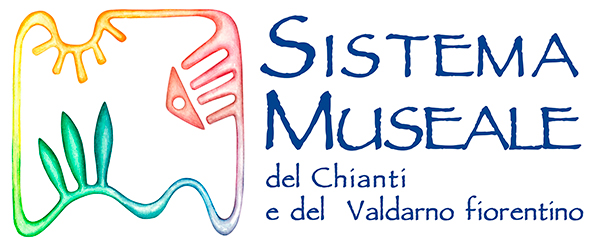San Casciano Val di Pesa
Torre panoramica del Chianti
Thirty-three metres high, built in the Fifties as a piezometric tower (water tank), since 2012, while continuing to serve this purpose, it has also become a panoramic tower. A glassed-in lift brings visitors to the terrace where they can admire the hills of Chianti, Florence with its Duomo, the Florentine countryside, the Pistoian mountains, the territory of Pisa and on very clear days, it seems, as far as the sea.
Since 2014 the tower has housed the Bulk-Icosaedro, an installation by Patrizio Travagli and WOKdesign, inspired by the study of regular, or platonic, solids, in the treatise ‘De divina proportione’ by Luca Pacioli and Leonardo Da Vinci.
• Address: Giardini Santa Chiara d’Assisi 38
• Contacts: 055 8256385; torrepanoramicadelchianti@gmail.com
• Opening Hours: Friday by appointment; Saturday-Sunday 10.00 am-1.00 pm, 4.00-7.00 pm (1 November-31 March: 10.00 am-1.00 pm, 3.00-6.00 pm)
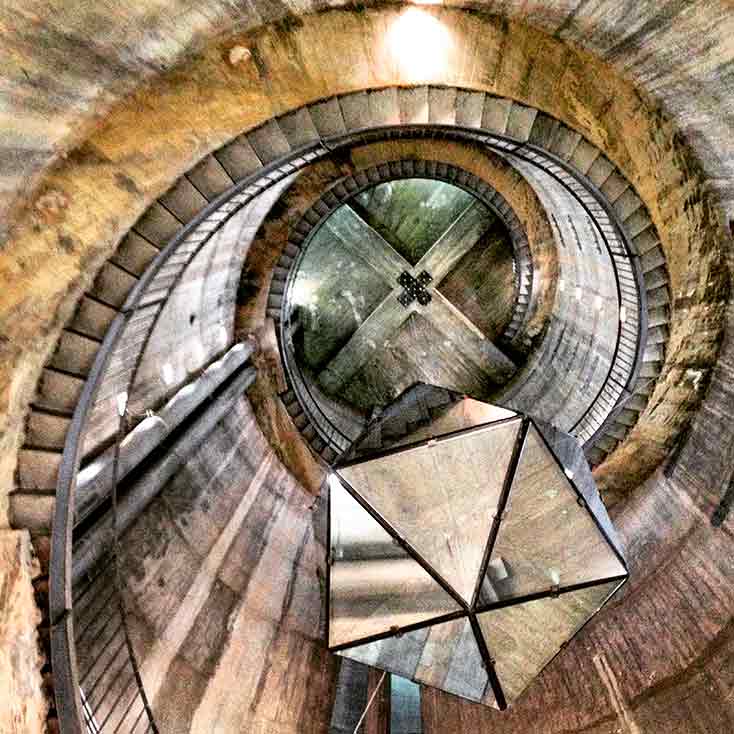

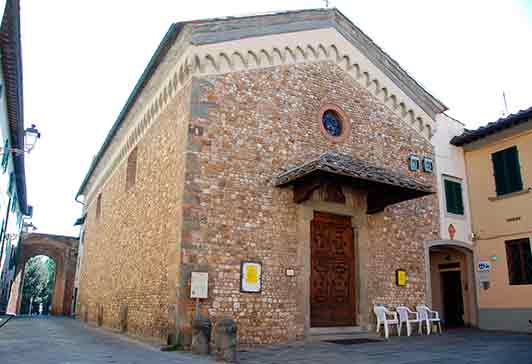
Chiesa della Misericordia
The church of Santa Maria al Prato, or of the Misericordia, was founded by the Dominicans of Santa Maria Novella in Florence in 1304. Very soon, starting in the first half of the 14th century, it was embellished by the works of outstanding artists. The many still found in the church today include a Crosspainted by Simone Martini, recently restored; aVirgin and Childby Ugolino di Nerio, and a marble pulpit signed by Giovanni di Balduccio. Remodelling in the 17th century provided new altars decorated with the altarpieces of Our Lady of the Rosary and the Circumcisionof Christ by Jacopo Vignali, and the Ecstasy of St. Carlo Borromeo by Francesco Furini.
• Address: Piazzetta Simone Martini, San Casciano Val di Pesa
• Contacts: 3336664371; robertocacciatori@libero.it
• Opening Hours: The church is closed for maintenance at present
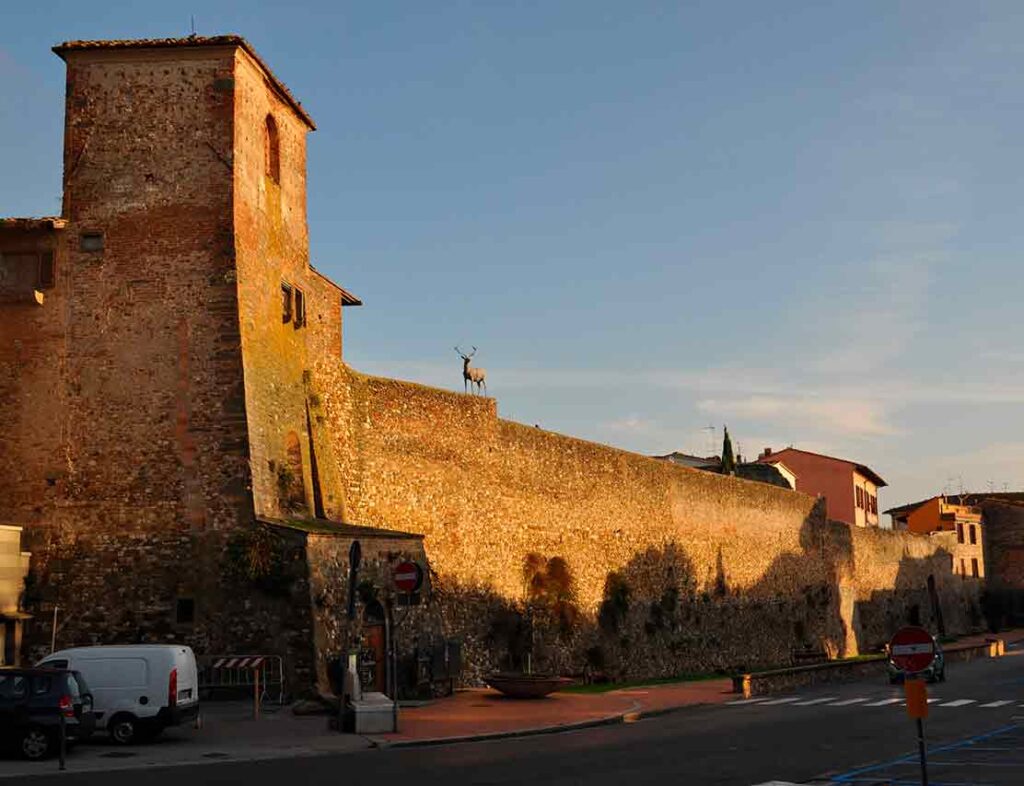
Medieval walls
San Casciano’s ancient belt of walls, as high as 7 metres, was built in 1356-57 at the order of the Comune of Florence, to provide a defensive bulwark at the gates of the city, on the road to Siena. Major restoration was carried out in the 16th century at the order of Cosimo I de’ Medici. Several sections remain, especially in the area facing the Piazzone park (Piazza della Repubblica), where the figure of a deer and some neon numerals, the work of Mario Merz, can be seen. Porta al Prato, the only surviving gate, beside the church of the Misericordia, was rebuilt after the town was bombed in July 1944.
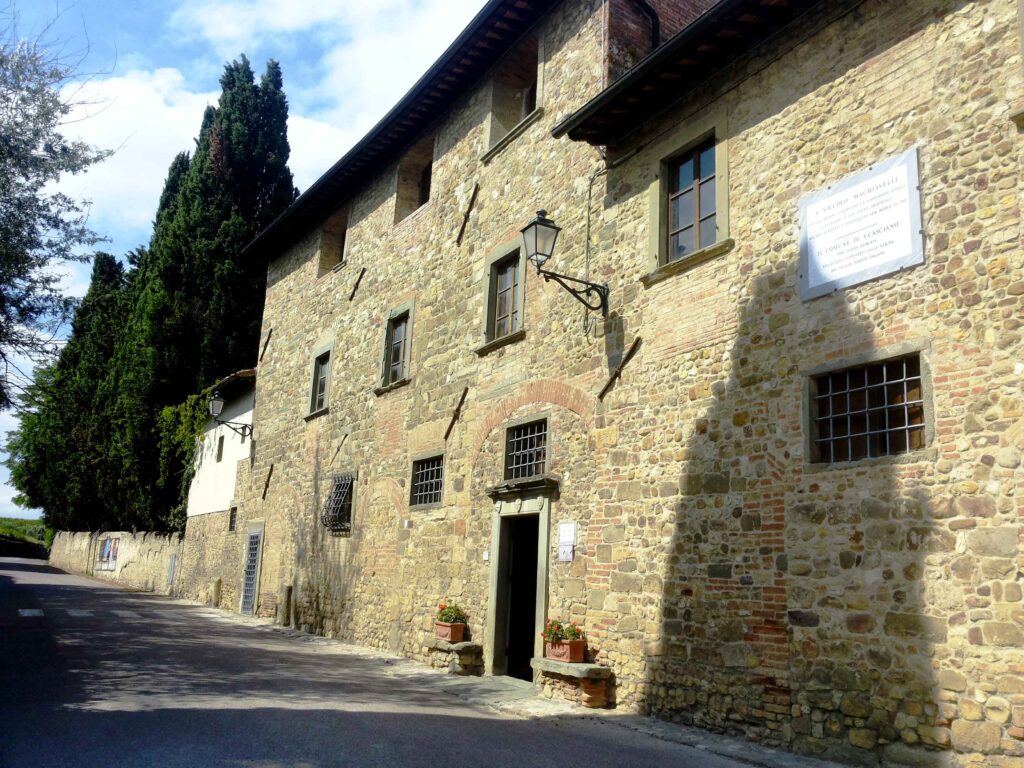
Casa Machiavelli
The tiny village of Sant’Andrea in Percussina is known the world over for the house where Niccolò Machiavelli stayed, exiled from Florence after having served the Republic at the time of the Medicis’ return to power. The Machiavelli family owned some property here, including an inn called the Albergaccio, mentioned by Niccolò in some of his letters, while in another he refers to San Casciano. It was in the house at Sant’Andrea, during the sad winter of 1513, that Niccolò wrote his most famous work: The Prince, a political treatise expressing his ideas on governing the State.
• Address: Sant’Andrea in Percussina, via Scopeti 64
• Contacts: 055 828471
• Opening Hours: Open: 11.00-12.00 am and 3.00-4.00 pm

La Tomba dell’Arciere (Archer’s Tomb)
The most important archaeological find in the territory of San Casciano is the Archer’s Tomb, found near Sant’Angelo a Bibbione in 1978 along with the imposing stele now in the Museo Ghelli. The tomb, an example of the great tholoiof Southern Etruria, consists of a square chamber reached through a short curving dromos. The tomb has been repeatedly violated since antiquity. The presence of post-classical era ceramics and of a Grand-Ducal coin indicate that it was probably used for agricultural and shepherding purposes at least up to the end of the 16th century.
• Address: La Collina, presso agriturismo Il Borghetto Agritourism, Montefiridolfi-Bargino road
Poggio la Croce
Starting from the mid-7th century B.C., the first clear signs of permanent Etruscan settlements in the Chianti territory, most notably at San Casciano, can be found. A good example is that of Poggio la Croce, the seat of aristocratic groups that controlled the territory and its roadways. Here two princely tumulus tombs have been found. Later, in the Hellenistic Age, Poggio la Croce acquired a belt of walls, new buildings and open spaces for various activities, becoming one of the Chianti fortresses, probably part of a control system exercised by the city of Fiesole. Wooded area along Strada Provinciale 118 Mercatale-Panzano, in front of the Solatione agricultural estate.
The Calzaiolo Tumulus
In the Seventies, traces of a great Etruscan tumulus tomb were found in the Calzaiolo locality. Little of the structure remained, but some important gold jewellery and objects made of bone and ivory were unearthed. Of high quality are ivory plaques from the 7th century B.C., lids for jewel boxes, decorated in carving or bas-relief with images of real and fantastic animals, a dancer and a prince in his war chariot, now displayed at the Museo Ghelli. Its site, at the centre of a network of major roadways, and its monumental size make the tomb symbolic of lordship over the territory by the prince and his family.
Ponterotto
A group of structures pertaining to buildings of different usage and from different periods have come to light in the Ponterotto locality. They include the remains of an Etruscan building from Hellenistic times (2nd century B.C.), probably used as a manufacturing-drying-storage facility for bricks. Structures pertaining to a farm or thepars rustica of a Roman villa (from the 1st-2nd to the 6th century A.D.) have also emerged; a small necropolis dates from the latter period. The area around Ponterotto thus appears to have been inhabited since antiquity, thanks to its abundant springs and fertile land, as well as the very fine clay, called ‘mattaione’, used to manufacture bricks and ceramic furnishings.
• Address: Ponterotto, Strada Provinciale Certaldese, beside the Laika plant
Do you need more information?
Sistema Museale del Chianti e del Valdarno – © 2021. All Rights reserved – Credits
Privacy Policy
Cookie Policy
